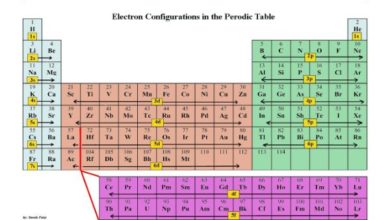Boyle’s law : Formula example Graph and Explanation in Chemistry
Boyle's law | Relationship between pressure and volume
In Boyle’s law, the pressure and volume are variables while the temperature and quantity of gas remain constant. Boyle’s law is stated as follows:-
The volume of a given mass of a gas at constant temperature is inversely proportional to the pressure applied to the gas.
‘K’ is proportionality constant. The value of K is different for the different amounts of the same gas.
According to the above equation, Boyle’s law can also be defined as “ the product of pressure and volume of a fixed amount of a gas at constant temperature is a constant quantity.
P1V1 are the initial values of pressure and volume, while P2V2 are the final values of pressure and volume.
Experimental verification of Boyle’s law
The following diagram indicates that at constant temperature say at 25˚C. The volume of a given quantity of a gas is reduced in proportion to the increase in pressure. Let us take gas in a cylinder having a movable piston. The cylinder is also attached with a manometer to read the pressure of the gas directly. Let the initial volume of gas is 1 dm3 and its pressure is 2 atmospheres when the piston has one weight on it. When the piston is pressed twice with the help of two equal weights, the pressure becomes four atmospheres.
Similarly, when the piston is loaded with a mass three times greater, then the pressure becomes six atmospheres. The initial volume of the gas at 2 atmospheres is 1 dm3, it is reduced to ½ dm3 and then 1/3 dm3 with an increase of weights, respectively.
P1V1 = 2 atm x 1 dm3 = 2dm3 atm = k
P2V2 = atm x ½ dm3 = 2dm3 atm = k
P3V3 = 6 atm x 1/3 dm3 =2 dm3 atm = k
Hence Boyle’s law is verified.
The value of K will remain the same for the same quantity of gas at the same temperature.
Let us take an example:
A gas having a volume of 10dm3 is enclosed in a vessel at 0˚C and the pressure is 2.5 atmospheres. This gas is allowed to expand until the new pressure is 2 atmospheres. What will be the new volume of this gas, if the temperature is maintained at 273K?
Solution:
The initial volume of gas (V1) =10dm3
Initial temperature (T1) = 0˚C + 273K = 273K
Initial pressure (P1) = 2.5 atm
Final pressure (P2) = 2 atm
Final temperature (T2) =273K
The final volume (V2) =?
Since the temperature is constant (T1=T2), Boyle’s law is applicable.
Graphical Explanation of Boyle’s law
Let us take a particular amount of a gas at a constant temperature say 0˚C and enclose it in a cylinder having a piston in it. When the pressure of the gas is varied, its volume changes. An increase in pressure decreases the volume. If a graph is plotted between pressure on the x-axis (abscissa) and volume on the y-axis (ordinate), then a curve is obtained as given above.
This curve is called isotherm ‘iso’ means the same, “therm” means heat.
Now increase the temperature of that gas to 25C. Keep this temperature constant and again vary the pressure and volume, and plot the isotherm. It goes away from both the axes. The reason is that at the higher temperatures, the volume of the gas has increased. Similarly, if we increase the temperature further, make it constant and plot another isotherm, it further goes away from the axis.
If a graph is plotted between 1/V on X-axis and the pressure P on the y-axis then a straight line is obtained as showing.





